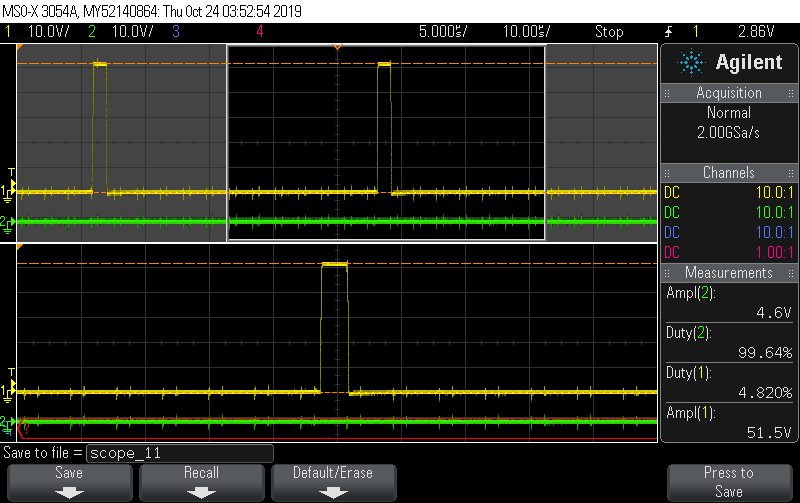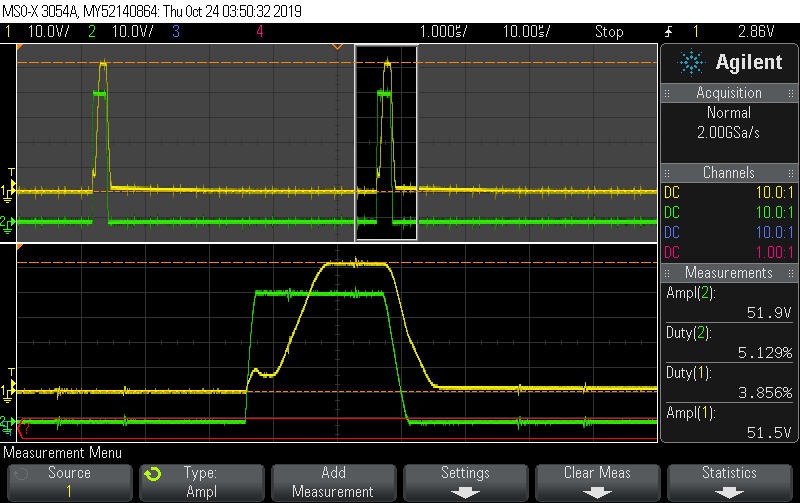Hi,
I'm using the DRV8844 to drive a single DC brushed motor, so I'm connecting the outputs in parallel to increase the available current (as discussed here). I have OUT1/2 shorted and OUT3/4 shorted, and same for IN1/2, EN1/2, and IN3/4, EN3/4.
I'm using slow decay drive, so PWM'ing the INx pins and keeping ENx constant logic high (as shown in Table 3 of the datasheet).
It is working; however, I noticed that the speed is pretty significantly different depending on which INx pair I drive with the PWM. The direction of the IN3/4 pair's max speed is about 20% that of the IN1/2 pair. I confirmed that this is independent of the motor, as I reversed the motor leads and the slower direction stayed with the same pair. I've also confirmed that the PWM signals are as expected; they're exactly the same for each pair.
I'm at a loss as to why I should be seeing such a discrepancy?
thanks,
Ryan



